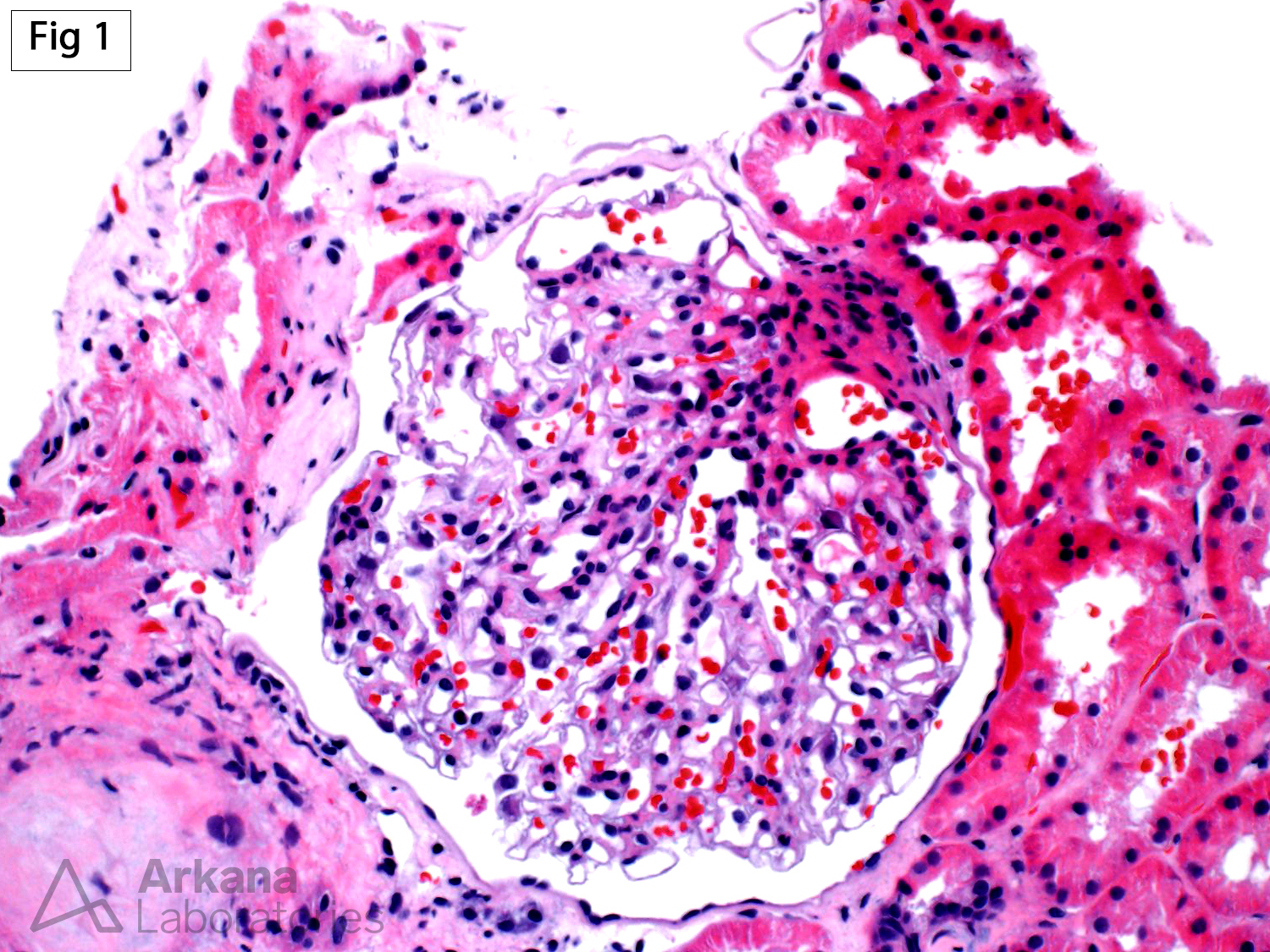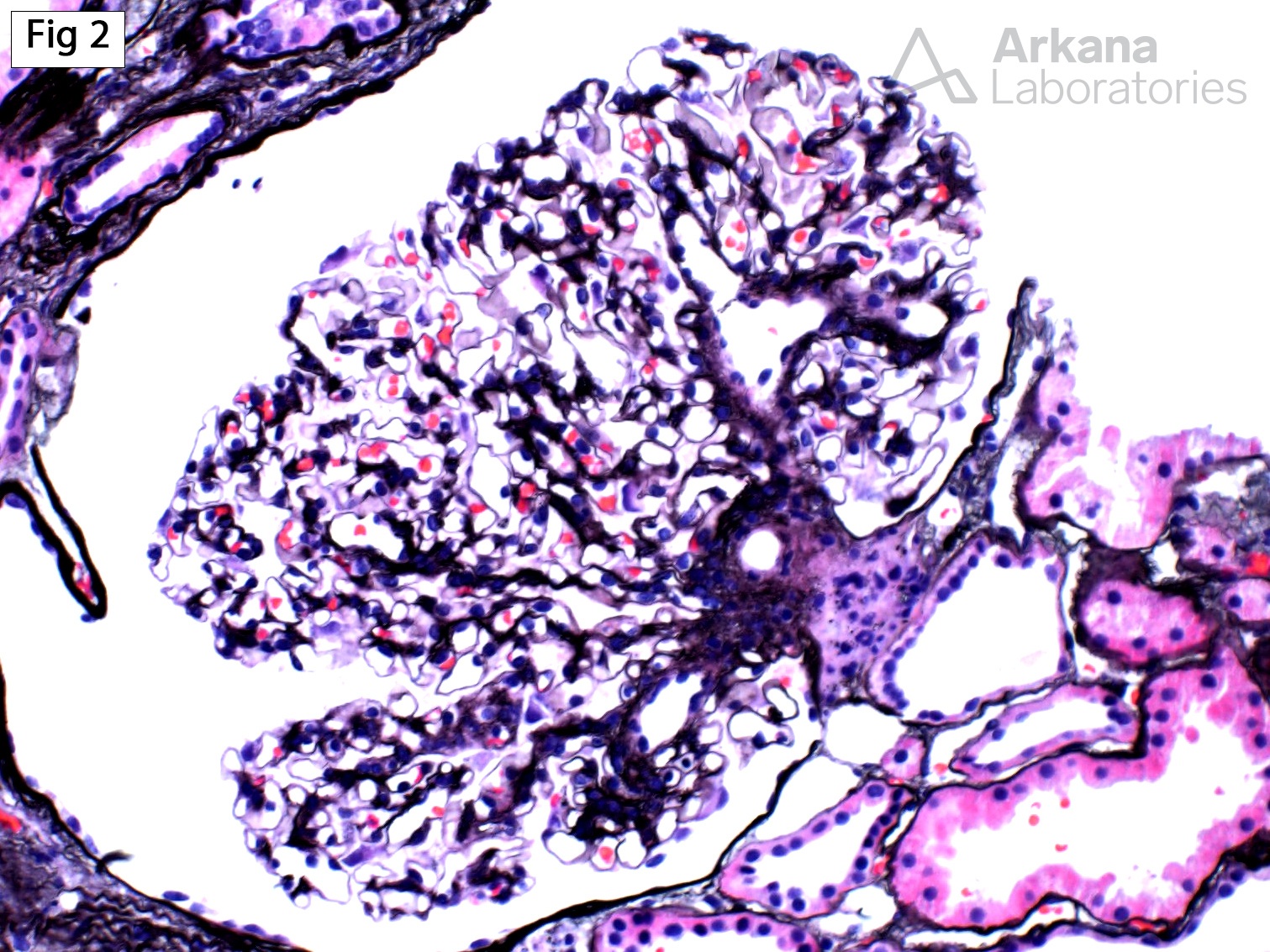This biopsy was performed on a 26 year old muscular male with history of persistent subnephrotic proteinuria (UPCR = 2.3 g/g) and preserved renal function. Serum albumin is maintained at 4.2 gm/dl with the remaining serologic workup negative. BMI is 38.2 kg/m2. Of note, the patient has a history of premature birth and has a twin brother with similar clinical presentation. The biopsy shows marked glomerular hypertrophy (Fig 1 and 2) with no evidence of segmental glomerulosclerosis, tubulointerstitial scarring, immune complex deposition or significant foot process effacement. Glomerular hypertrophy (glomerulomegaly) is a form of adaptive structural-functional response which occurs as a consequence of either a decreased number of nephrons or increased demand. In this patient, the glomerular changes are likely a combination of both factors. On one hand, he likely has a reduced nephron mass secondary to the history of premature birth. On the other, he is muscular and has increased BMI. Other conditions associated with glomerulomegaly include obesity, pulmonary hypertension, sleep apnea, sickle cell disease, cystic fibrosis and oligomeganephronia. While patients may present with subnephrotic or nephrotic range proteinuria, they usually lack other features of nephrotic syndrome, such as hypoalbuminemia, edema and hypercholesterolemia.
Quick note: This post is to be used for informational purposes only and does not constitute medical or health advice. Each person should consult their own doctor with respect to matters referenced. Arkana Laboratories assumes no liability for actions taken in reliance upon the information contained herein.



